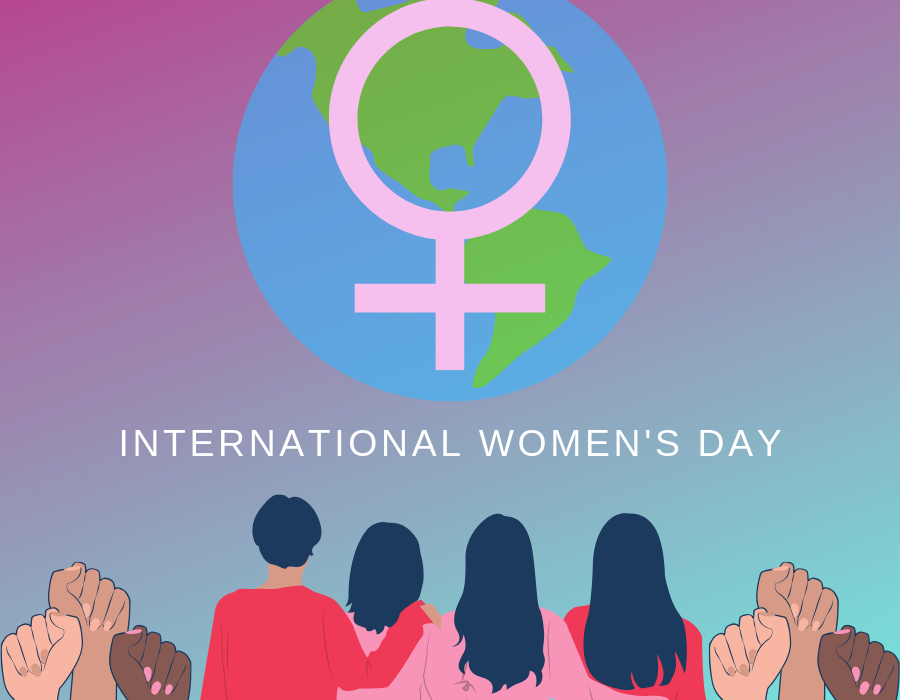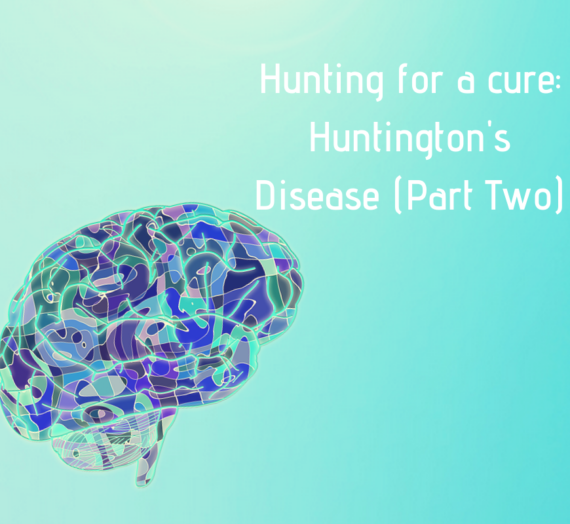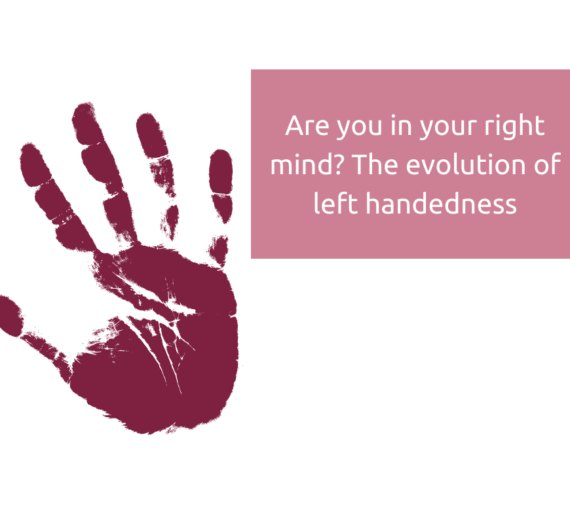Happy International Women’s Day! 8th March marks a global celebration of the achievements of women throughout history, and in present times. This year’s theme is Balance For Better, highlighting the need to generate greater equality between the genders, worldwide. The need for gender parity applies to a wide array of people, and we can all do our part to advance it. Here at Seeking Science, we thought we’d celebrate by showcasing some women in science throughout history that we find inspirational, so read on to learn more about some fabulous females in science!
Mary Anning
 The name Mary Anning has been gathering attention over recent years, and rightly so. Not only a prominent figure in the developing field of palaeontology, she may also be considered one of the founders of citizen science.
The name Mary Anning has been gathering attention over recent years, and rightly so. Not only a prominent figure in the developing field of palaeontology, she may also be considered one of the founders of citizen science.
Born in Dorset, England, in 1799, Mary was not brought up in a prosperous family. Her father made cabinets for a living and boosted the family’s income by digging for fossils around the Dorset coast, and selling the findings to tourists. Mary had a limited education, learning to read and write at a Congressionalist Sunday school. Mary’s family were dissenters from the Church of England, making them outcasts from the prominent Anglican church and social circles, which would later further exclude her from the science field, which was mainly made up of prominent Anglican (male) figures.
Mary’s father taught her how to search for fossils when she was around 6 years old. When he died of tuberculosis in 1810, the family fell even further into poverty, and fossil hunting became a much more important source of income. At the age of 12, Mary and her brother Joseph, discovered the remains of what we now know as an Ichthyosaur. The skeleton measured a whopping 5.2 meters, and scientists at the time believed it to be a form of crocodile.
In 1823 Mary discovered the first complete Plesiosaurus skeleton. The strange looking fossil gathered so much attention that a special conference was organised at the Geological Society of London to determine whether it was genuine or not. Mary, of course, was not invited to attend.
Fossil collecting was a dangerous business, as Mary discovered in 1833 when she was nearly killed by a landslide (which sadly claimed the life of her dog, Tray).
Despite her work in finding, cleaning, and identifying fossils, Mary was rarely acknowledged in the scientific publications of the men she sold the finds to, despite their reliance on her expertise and input. She died in 1847 from breast cancer. The famed geologist and artist, Henry De la Beche remarked in her death notice that she was “not placed among even the easier classes of society, but who had to earn her daily bread by her labour”. Mary Anning came from an underprivileged background, and her gender certainly didn’t make things any easier for her. Nevertheless, she worked tirelessly to uncover the secrets of the Earth’s history, and serves as a reminder that science should be for all, and not just the hobby of the upper classes.
Ynes Mexia
Ynes Mexia was a Botanist and explorer born in 1870, in Washington D.C, to a Mexican father and American mother. Despite starting her career at the age of 55 years, she collected 150,000 botanical specimens, which are still being classified to this day!
Mexia lived a very troubled life, in 1873, at the age of 3, her parents separated and she lived with her mother in Texas until her teenage years, during which she moved back to Mexico City to live with her father. She was married twice, her first husband passed in 1904, just after she went through a harrowing court case against her father’s mistress for her inheritance. She remarried at the age of 38, but soon divorced her husband; both her marriages were described as “unhappy” and led to struggling with mental health disorders. She moved back to San Francisco to recuperate and worked as a social worker, she also travelled with the Sierra Club in 1920 which aided in her mental and physical recovery. In 1921, at the age of 51, she enrolled in courses at the University of California, in Berkeley, where she developed a passion for botanical collecting. In 1925, she embarked on her first collecting trip to Mexico, and over the next 12 years she made 7 more collecting trips, travelling to Alaska, Mexico, Brazil, Peru, Ecuador, Chile and Argentina. She braved long and difficult journeys, even falling down a cliff and fracturing several ribs, and she took some trips alone which was completely unheard of for women at the time. Her last trip was cut short due to falling ill and soon after she was diagnosed with cancer and passed away in 1938.
Although she never officially graduated with a sciences degree, her experience and contribution to the botanical sciences is unparalleled and defines her as a scientist. Despite starting at a relatively late age and living such a difficult life, her dedication serves as an inspiration that everyone has the capabilities to succeed with work hard and will power.
Rosalind Franklin
 Rosalind Franklin was an unsung hero during her time, nowawdays being recognised for her incredible contribution towards the discovery of the structure of DNA, which was unfortunately only acknowledged and accredited to her after her untimely demise. Born in Notting Hill, London, into an influential British Jewish family on 25th July 1920, Franklin was an extremely intelligent and promising student, having received a scholarship for university upon receiving six distinctions and topping almost all of her classes – excelling in science in particular.
Rosalind Franklin was an unsung hero during her time, nowawdays being recognised for her incredible contribution towards the discovery of the structure of DNA, which was unfortunately only acknowledged and accredited to her after her untimely demise. Born in Notting Hill, London, into an influential British Jewish family on 25th July 1920, Franklin was an extremely intelligent and promising student, having received a scholarship for university upon receiving six distinctions and topping almost all of her classes – excelling in science in particular.
In 1951, Franklin began working in the Medical Research Council’s Biophysics unit as a research associate in King’s College London. She was the only experienced diffraction researcher in the university at the time, having studied physical chemistry at Cambridge University previously. She used her experience and knowledge on X-ray diffraction techniques in order to help her understand the structure of DNA through X-ray crystallography. By January 1953, she had concluded that the two forms of DNA (A and B) consisted of helical conformations. In February the same year, James Watson and Francis Crick from Cambridge University used Franklin’s research to create a molecular model of DNA and suggested that DNA had a double-helix polymer structure. This was published in Nature in April 1953, with Watson and Crick taking most of the credit and only offering acknowledgement of Franklin’s work in a mere footnote – despite their research being rooted from Franklin’s original thesis. Franklin, however, did not cause a fuss.
Rosalind Franklin passed away at the young age of 37 on April 16, 1958, due to ovarian cancer which she had battled with for a long time, despite having had various operations and receiving chemotherapy previously. Our unsung hero may have lived a short life but the inspiration and impact she and her research left behind on the medical world continues to push us forward to this day. She is a prime example of how some women have been erased from the history of science, and this gives us an even stronger motivation to strive harder and make ourselves and our work known as ours.
Alice Ball
Alice Ball, having earned bachelor’s degrees in both pharmaceutical chemistry and pharmacy from the University of Washington, became the first ever woman to graduate with a master’s degree in chemistry from the University of Hawaii.
Her research focussed on developing treatments for leprosy, also known as Hansen’s disease. She pioneered an intravenous drug using oil from the chaulmoogra tree (Hydnocarpus wightiana), which had previously been used as a topical treatment in traditional Chinese and Indian medicine (with low success rates). Ball’s injectable form of the oil, which she developed at the age of 23, meant that the active ingredients could be more readily absorbed into the body.
Sadly, Alice died before she was able to publish her findings. She died in December 1916 at the age of 24, due to complications caused by inhaling chlorine gas in the lab. Arthur L. Dean, the president of the University of Hawaii, took credit for Alice’s work, which had helped almost 80 leprosy patients. The University finally recognised her work in 2000 with the unveiling of a plaque on a chaulmoogra tree on the campus. Frankly, this doesn’t even come close to honouring this remarkable young woman, who undoubtedly would have gone on to achieve even greater things if it weren’t for her untimely death.
Rita Levi-Montalcini
 Rita Levi-Montalcini, born on April 22nd 1909 in Turin, Italy, into a Jewish family, was a renowned neurologist who, alongside biochemist Stanley Cohen, was awarded the Nobel Prize for Physiology or Medicine in 1986 for her discovery of Nerve Growth Factors.
Rita Levi-Montalcini, born on April 22nd 1909 in Turin, Italy, into a Jewish family, was a renowned neurologist who, alongside biochemist Stanley Cohen, was awarded the Nobel Prize for Physiology or Medicine in 1986 for her discovery of Nerve Growth Factors.
Growing up in a time where women were confined to subordinate roles, she had to battle hard for her career. Defying her father’s wishes, she studied Medicine at the age of 20, graduating in 1936. During her time there, she was under the tutelage of Guiseppe Levi, where she learnt much about histology and conducted research on how nerve cells grow. After graduation she continued her research, however Benito Mussolini’s race laws led to the ejection of Jews and forced her to go into hiding.
Despite the world falling apart around her and moving across Italy and Belgium, she was determined to continue her research so she set up a laboratory in her bedroom which moved with her to Belgium and back to Italy, and she even went on to publish her results in 1942 and 1943. After the war, Viktor Hamburger, having seen the publications, invited Levi-Montalcini to his lab at Washington University in St. Louis, where she stayed for 30 years, became a professor, discovered NGF and became one of the 51 women to be awarded a Nobel Prize.
The first Nobel Prize Winner to live to 100 years, she was a scientist unlike any other and fought all of her life for her place and for the place of many other women in the scientific community. Her story and struggles not only inspire but also serve as a reminder to never give up on your dreams; “Above all, don’t fear difficult moments; the best comes from them”.
Don’t forget to check out Brinda’s guest post on promoting equal opportunities for women in stem here
Plus, here are some of our other posts featuring some incredible women in science!
Smashing Science Stereotypes: In Conversation with The Catalyst In Me
Henrietta Lacks: A Cellular Legacy
Merging minds: In conversation with BrainPost
Breaking it down: when protein metabolism goes wrong
Self-directed evolution? Jennifer Doudna talks CRISPR at the Royal Society




